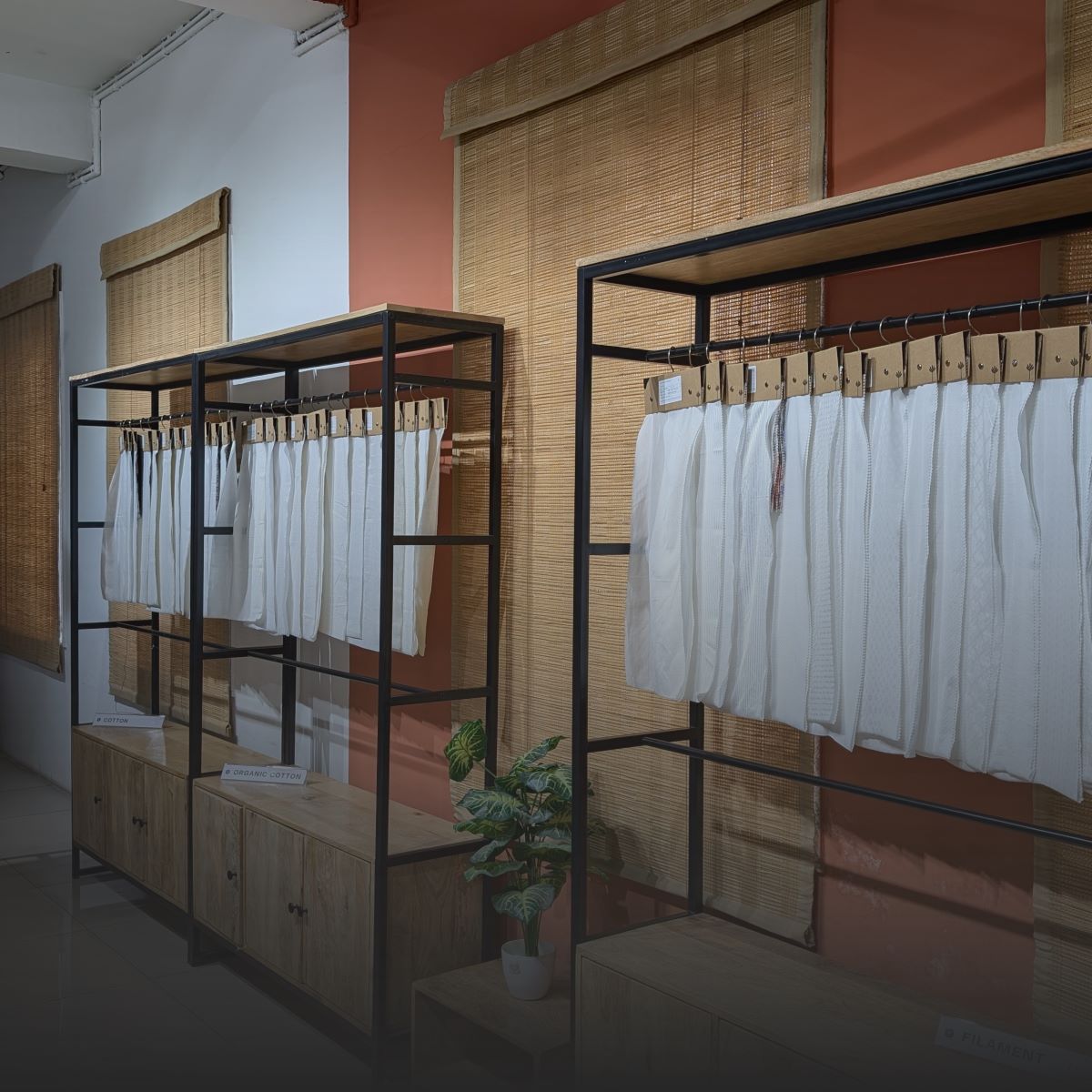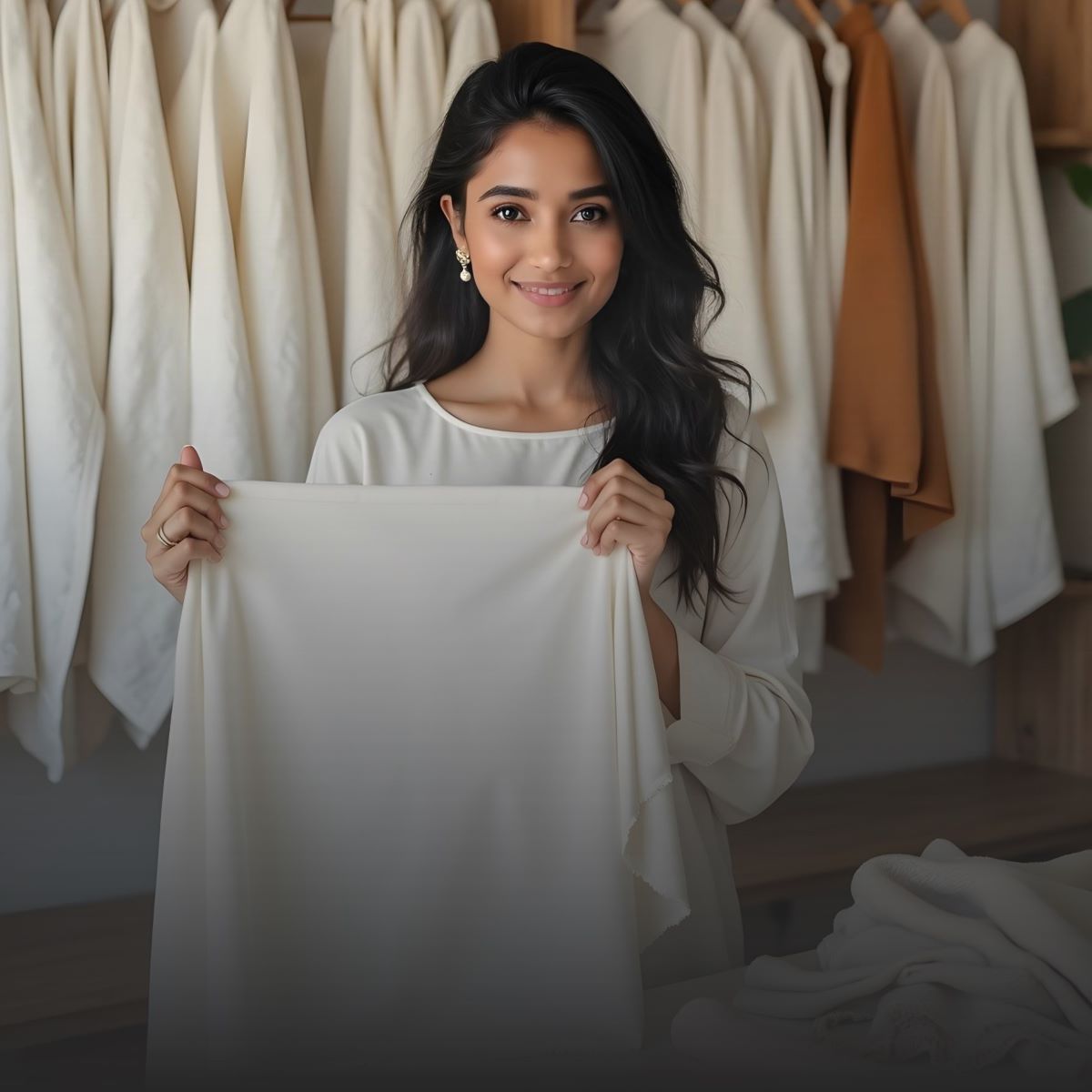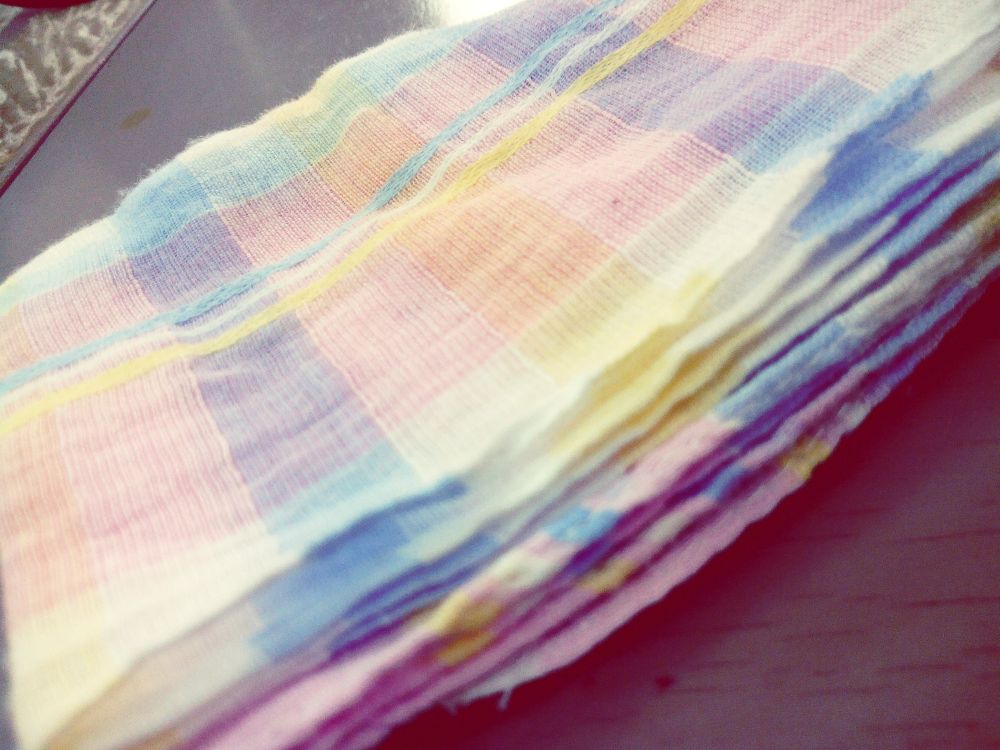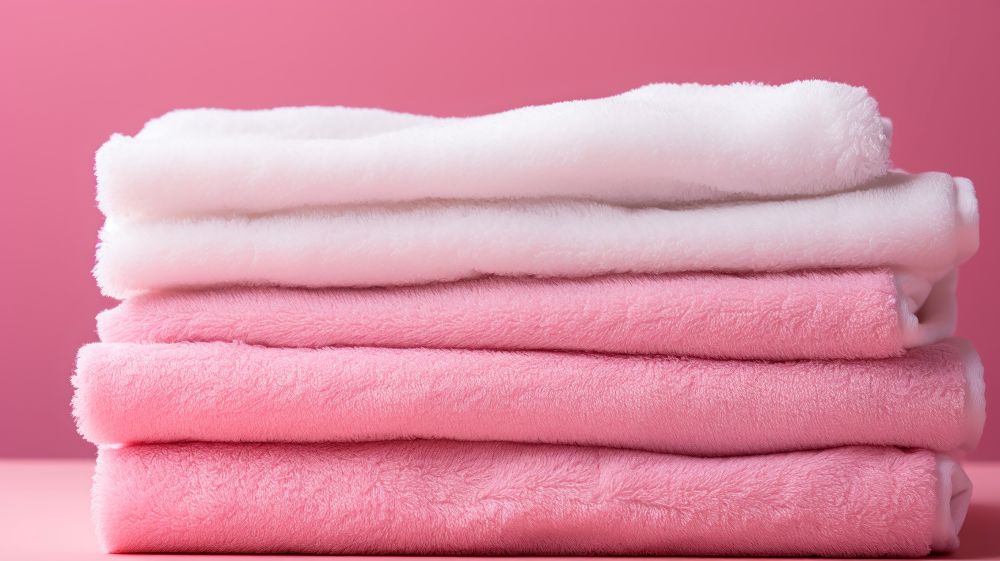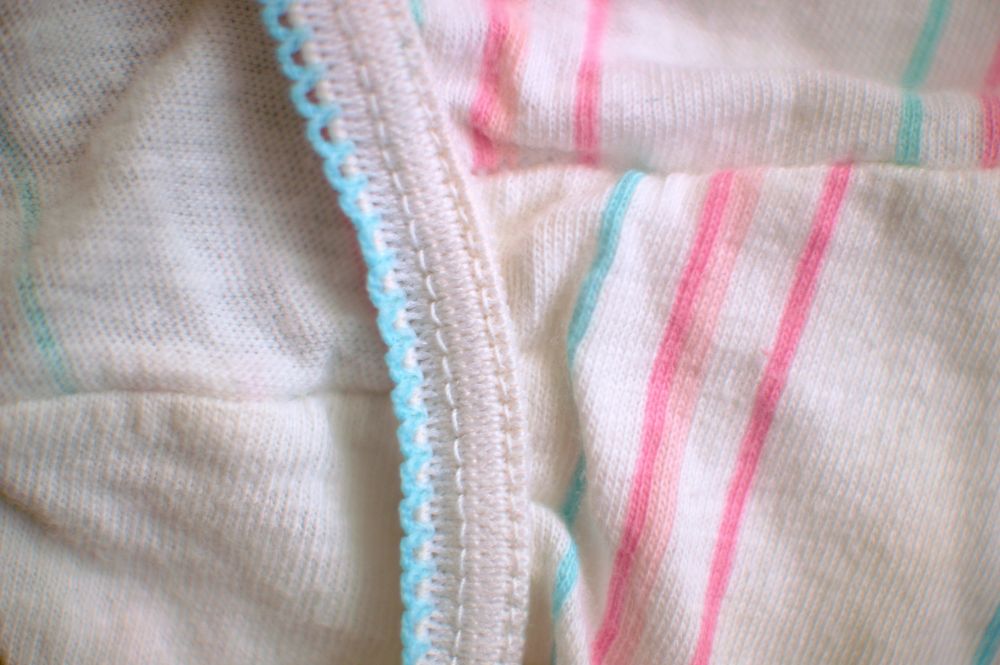Originality defines success in the creative economy today. As a fashion designer, interior stylist, or brand owner, turning your designs into fabric brings ideas to life.
Custom fabric printing has made it simple for designers to transform artwork, patterns, or digital graphics into authentic textiles that match their vision, brand colours, and collection themes.
If you've ever wondered, Can I print my own design on fabric?, the answer is yes — and the process is more straightforward, faster, and more accessible than you think.
This article explains how to print your designs on fabric, what printing options are available (digital, screen, handblock), how MOQs work, and why sourcing through a trusted partner like Fabriclore ensures professional-quality results with fast delivery.
The Rise of Custom Fabric Printing in Fashion & Interiors
The fashion and home decor industries around the world are moving towards personalised things. Custom fabric printing has grown into an important business and art tool.
These days, designers don't just use fabrics that have already been painted on. Instead, they really want these things:
- They have exclusive prints that show off their name.
- When colours are accurate, they match Pantone shades or yearly colour schemes.
- Flexible MOQs for samples or sets that are only made in small amounts.
- Sustainable processes that use little water and dyes that don't contain AZO.
-
Print-on-demand textiles are used by both high-end fashion houses and small clothes businesses to be creative and keep an eye on production.
Understanding Fabric Printing Options
You should know how fabric printing works and which way is best for your design, the type of fabric, and the number of items you want to print before you begin.
1. Digital Printing (MOQ: 200 meters per design)
Picture copies, high-resolution art, and small runs can all be made with digital printing.
People who use printers put reactive or pigment paints on the paper directly to get precise detail and vibrant colour output.
Best for:
- Cotton, Linen, Viscose, Modal, Bemberg, Tencel
- Multi-colour or gradient designs
- Fast sampling and short production runs.
Advantages:
- No screen setup cost
- Photographic colour precision
- Minimal fabric waste
- Perfect for complex or detailed patterns
2. Screen Printing (MOQ: 300 meters per design)
Lots of thin layers of ink are put down on holes or mesh screens in screen printing. This makes colours that are bright and last a long time.
Most people pick this for bold, graphic, or limited-colour designs.
Best for:
- Cotton, Polyester, and Blends
- Uniforms, apparel lines, or branding prints
- High-volume, repeat designs
Advantages:
- Excellent opacity on dark fabrics
- Strong colour penetration
- Cost-effective for large batches
3. Handblock Printing (MOQ: 500 meters per design)
Handblock printing is an old art form in India that involves stamping patterns on cloth by hand with carved wooden blocks.
Since each piece is handmade, it has its own special charm that makes it perfect for boutique or luxury collections.
Best for:
- Cotton, Silk, Linen, and Blends
- Ethnic wear, sarees, dupattas, and home decor lines
Advantages:
- Handcrafted uniqueness
- Organic aesthetic appeal
- AZO-free natural dyes

Step-by-Step: How to Print Your Own Design on Fabric
The process is the same whether you print online or the old-fashioned way. Here's how graphic artists make their work come to life.
Step 1: Prepare Your Design File
- Format: High-resolution JPEG, PNG, or TIFF (300 DPI minimum).
- Size: Ensure the file matches the actual print scale (e.g., 44, 56, 58 width).
- Colour Mode: Use CMYK or Pantone references for accuracy.
- Repeat: If it's a pattern, ensure seamless tiling.
Pro Tip: Ask your printing partner for pre-print mockups before production if you have a lot of complicated repeats.
Step 2: Choose Your Base Fabric
The type of fabric affects how clear, rough, and long-lasting the picture is.
You can choose from more than 300+ premium bases, such as
- Cotton: Soft, breathable, ideal for apparel & home.
- Linen: Textured, natural look for decor or resortwear.
- Viscose / Modal: Smooth drape with a luxurious feel.
- Liva & Tencel: Sustainable cellulosic fabrics for conscious brands.
- Bemberg & VFY: Glossy and silky bases for luxury lines.
- Polyester Blends: Wrinkle-resistant and colourfast options.
The team at Fabriclore can help you find the right fabric for your project, whether you need light voile for dresses or sturdy canvas for bags.
Step 3: Select Your Printing Technique
Each printing process — digital, screen, or handblock — gives a unique finish.
|
Printing Method |
MOQ |
Best For |
Color Range |
Turnaround |
|
Digital Printing |
200m / design |
Complex, multi-color designs |
Unlimited |
12–15 days |
|
Screen Printing |
300m / design |
Bold, limited-color prints |
Up to 10 colors |
15–20 days |
|
Handblock Printing |
500m / design |
Artisanal, natural designs |
Natural/eco dyes |
20–25 days |
Choose the option from the above that best suits your design style, the number of items you need to create, and the delivery time frame.
Step 4: Approve Lab Dips & Test Swatches
Before the end production, you should always ask:
- Lab Dips: To match the color tones.
- Swatches: To see how clear the picture is and how the fabric feels.
Fabriclore gives colourfastness, shrinkage, and spotting tests to make sure that your fabric keeps working well after it has been made.
Step 5: Confirm Order & Begin Printing
Once you agree with the samples:
- Confirm your final quantity (as per MOQ).
- Approve artwork placement and repeat size.
- Review pricing and lead time.
Once the design is approved, it is either digitally or manually produced by professionals using eco-friendly colours that don't contain AZO.
Step 6: Quality Inspection & Dispatch
There are strict checks on every order to make sure that:
- Colorfastness
- Shrinkage tolerance
- Extra spotting inspection
- Pre-packaging metering
- Weather-safe packaging
Average lead time: 12–15 business days
Shipping: Via FedEx & DHL, with live tracking and global delivery.
Also Read: What Are Some Options for Customized Fabric Design and Printing?

Why Printing Your Own Design on Fabric Gives You an Edge
This is why designers are moving from pre-printed fabrics to custom printed fabrics:
- Brand Exclusivity: No duplication; each print is uniquely yours.
- Creative Freedom: Design without colour or layout limits.
- Small-Batch Flexibility: Produce 200–500 meters instead of thousands.
- Sustainability: Print-on-demand reduces excess inventory.
- Faster Market Entry: Quicker sampling and collection development.
Custom printing turns your idea into a signature that people will know right away.
Where to Print Your Own Fabric Design — The Fabriclore Advantage
Fabriclore is a custom fabric printing partner in India that can help you with digital, screen, and handblock printing on more than 300 high-quality fabrics. Every print from Fabriclore is of high quality, can be changed easily, and is always the same. It's perfect for designers, fashion names, and exporters.
Why Fabriclore Is the Preferred Fabric Printing Partner:
- Extensive Fabric Range: 300+ bases — Cotton, Linen, Viscose, Liva, Tencel & Silk blends.
- Flexible MOQs: Start from 200m (digital), 300m (screen), or 500m (block).
- Eco-Friendly Dyes: AZO-free, OEKO-TEX®–certified, and safe for all uses.
- Pantone-Matched Printing: Accurate colour consistency across batches.
- Comprehensive Quality Checks: Colourfastness, shrinkage & pre-shipment testing.
- Finishes Your Way: You can pick a matte, shiny, or soft-flow finish.
- Fast Shipping Around the World: 12–15 working days around the world with FedEx and DHL.
- Support that is dedicated: Design-to-print guidance to make sure everything goes smoothly.
👉 Explore more: Custom Fabric Printing by Fabriclore
Quality Testing Parameters — Before Final Dispatch
Every printed cloth goes through several quality checks to make sure it is consistent and will last.
|
Parameter |
Purpose |
|
Colorfastness Test |
Ensures color does not bleed or fade after washing or exposure. |
|
Shrinkage Test |
Verifies dimensional stability after processing. |
|
Spotting Inspection |
Detects ink or dye marks on fabric surface. |
|
Metering Test |
Confirms exact roll length per order. |
|
Weather-Proof Packaging |
Protects fabric from moisture and light during transit. |
This organised quality control method makes sure that the bulk order you place looks just like the sample you approved.
How Designers Use Custom Printed Fabrics
Custom printing lets designers make lines that are more varied without having to change the base materials.
Here are some ways that different fields use custom cloth printing:
Fashion Designers
- Capsule Collections: Create small-batch exclusives with custom prints.
- Resortwear & Co-ord Sets: Vibrant, digital-printed viscose or linen.
- Seasonal Lines: Quick reprints of successful patterns.
Home Furnishing Brands
- Curtains, Upholstery, and Cushions: Screen-printed cotton or polyester bases.
- Limited-Edition Decor Lines: Handblock-printed cottons with natural dyes.
Textile Exporters & Manufacturers
- Private Label Printing: Pantone-controlled runs for international clients.
- Custom Branding: Logos, motifs, and exclusive colourways.
Art & Craft Entrepreneurs
-
Print Your Artwork: Turn digital art into physical merchandise — scarves, wall hangings, or fabric panels.
Sustainable Fabric Printing — The Modern Standard
Today's textile printing is both creative and good for the earth. Fabriclore does sustainability into every stage of printing:
- AZO-Free Reactive & Pigment Dyes: Safe for skin and the planet.
- Water-Efficient Processing: Reduces dye bath waste.
- Eco-Packaging: Weather-resistant and recyclable rolls.
- Digital Colour Control: Minimises reprints and rejects.
These habits help designers keep an eco-friendly supply line, which is essential for modern brands.
Common Mistakes in Fabric Printing (and How to Avoid Them)
Source-finding or print-prep mistakes can happen to even the most skilled designers. Don't make these mistakes:
|
Mistake |
Impact on Fabric Printing |
How to Avoid It |
|
Using Low-Resolution Files |
Produces pixelated or blurry prints, reducing design quality. |
Always use high-resolution artwork (minimum 300 DPI) in CMYK mode for clarity and precision. |
|
Skipping Swatches or Test Prints |
Unexpected color shifts or print texture issues during bulk production. |
Order swatches or test prints before final runs to verify color, scale, and fabric compatibility. |
|
Ignoring Fabric Compatibility |
Incorrect ink absorption, dull colors, or smudging on unsuitable bases. |
Confirm the right base fabric and ink type (reactive, pigment, or sublimation) before printing. |
|
Using Inconsistent Color References |
Causes mismatched shades across production batches. |
Stick to Pantone color codes and approve lab dips for every new print order. |
|
Underestimating Lead Times |
Delays production, affecting launch or client delivery schedules. |
Plan for 12–15 business days for production, dyeing, and dispatch — especially for custom orders. |
The Smart Printing Workflow Recap
If you follow the process below, you can be sure that the colours will be correct every time and that the delivery will be on time.
- Upload or share your high-resolution design file.
- Select the base fabric from 300+ options.
- Choose printing technique — digital, screen, or block.
- Order swatches or lab dips for testing.
- Approve colour and finish.
- Confirm MOQ and production.
- QC checks, packaging, and global dispatch.
Fabric Printing Trends for 2025 and Beyond
Trends in cloth printing change along with changes in fashion and home decor. The next wave of creative production is shaped by the following:
- Digital printing on eco-friendly fabrics to order: There are more names for bases made of Tencel, Liva, and Organic Cotton.
- Printing with Pigment Without Water: Green technology is becoming more popular.
- 3D Prints and Photorealistic Prints: High-resolution patterns that you can touch in design.
- Toned-down earth tones and naturals: In 2025, sage, brown, and rust will be the most popular colors.
- Collections with a Mix: Digital prints and hand-embroidery are put together to make high-end fashion.
If you keep up with these trends, your collections will always look fresh and ready for the market.
Also Read: Which Platforms Offer Customized Fabric Printing Services for Designers

Final Thoughts
If you own your creation, you own your fabric. When you print your own design on fabric, you decide how your brand looks, how long it lasts, and how fast it is made.
You can get 300+ certified fabrics, low MOQs, and professional digital, screen, and handblock printing through Fabriclore. They send everything around the world in 15 business days.
You'll also be able to see the whole quality process, from tests for colourfastness and shrinkage to eco-friendly packing.
Fabriclore helps you turn your art into fabric with precision, creativity, and reliability, whether you're making unique resortwear, home decor, or capsule collections.
👉 Start your fabric printing journey today: Print Your Design on Fabric | Fabriclore
FAQs: Printing Your Own Design on Fabric
Q1. Can I Print My Own Design On Any Fabric?
You can print on cotton, linen, viscose, polyester, silk mixes, Liva, and Tencel, among other 300+ bases.
Q2. What's The Minimum Order Quantity (MOQ)?
A digital print takes 200 meters per design, a screen print takes 300 meters, and a handblock print takes 500 meters.
Q3. How Long Does It Take To Receive My Printed Fabric?
FedEx or DHL shipping takes 12–15 business days around the world for production and shipping.
Q4. Are The Dyes Used Safe And Eco-Friendly?
Yes, Fabriclore uses AZO-free and OEKO-TEX® compliant colours in all of their prints.
Q5. Can I Get Test Prints Before Placing A Bulk Order?
Of course. Before printing on a large scale, Fabriclore offers swatch samples and lab dips.
Q6. Do You Provide Quality Testing?
Yes. Colourfastness, shrinkage, spotting inspection, and pre-packaging metering are all done on every batch.
We also happen to be a magnet for suggestions, and would love to catch yours….throw us yours on hello@fabriclore.com
